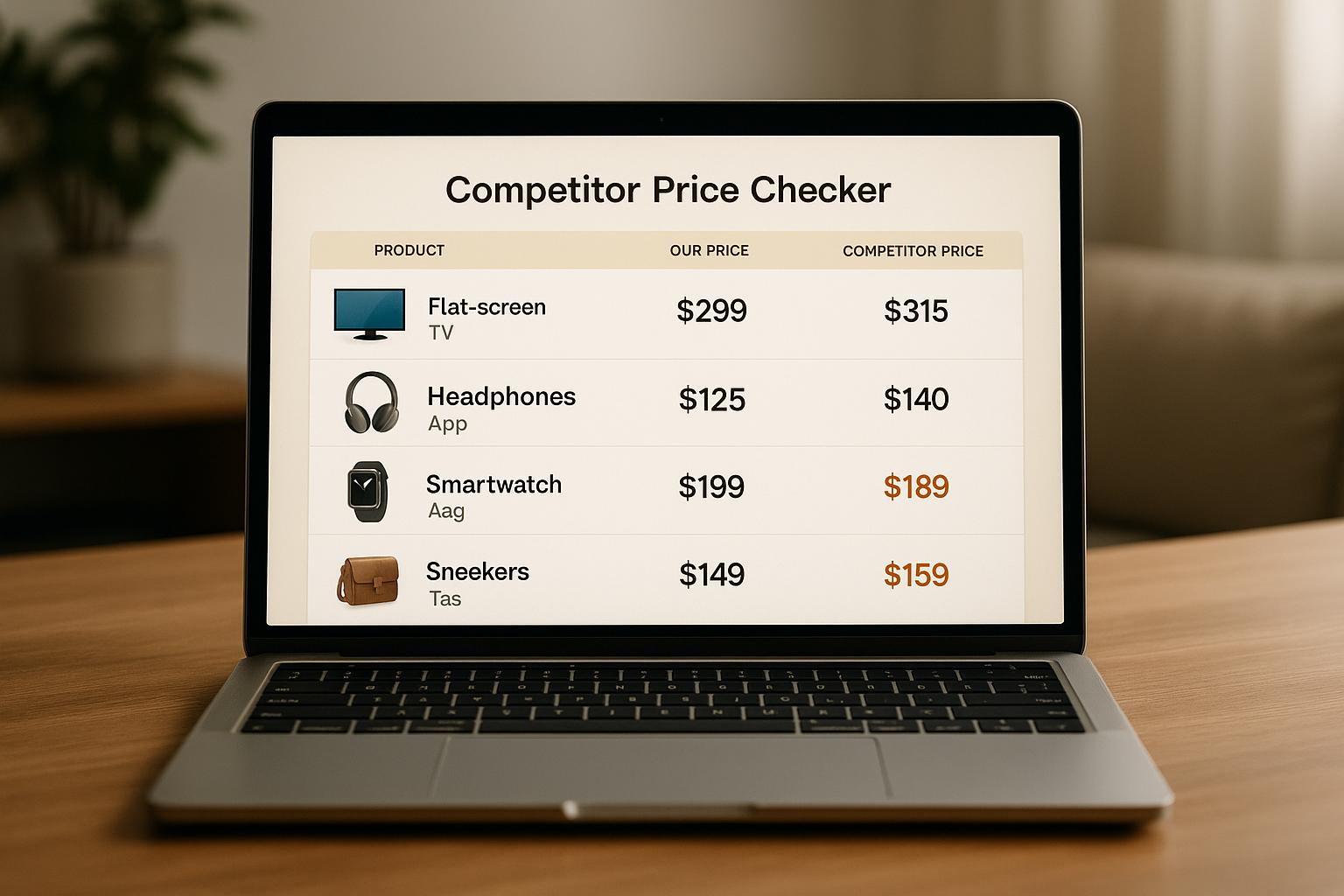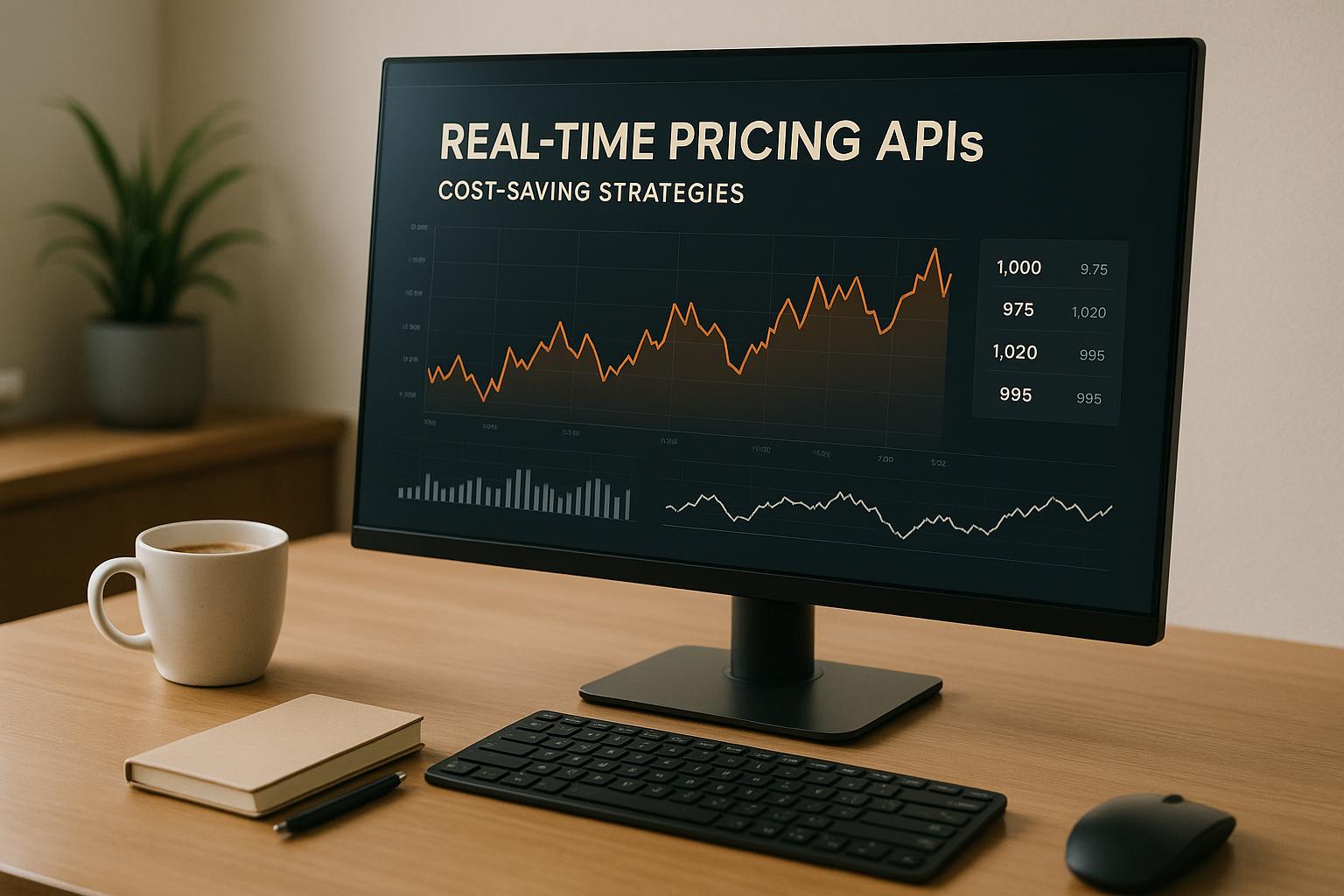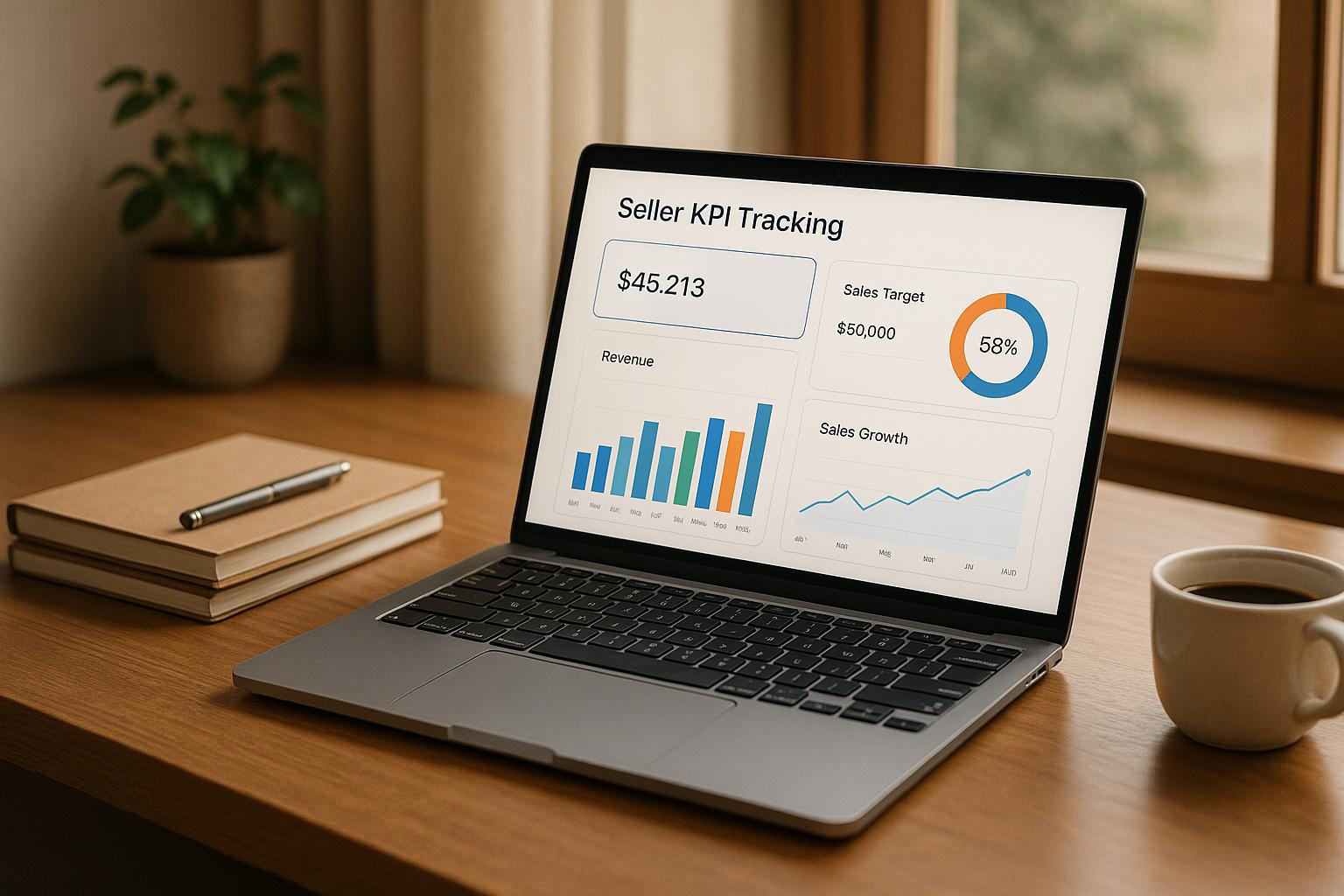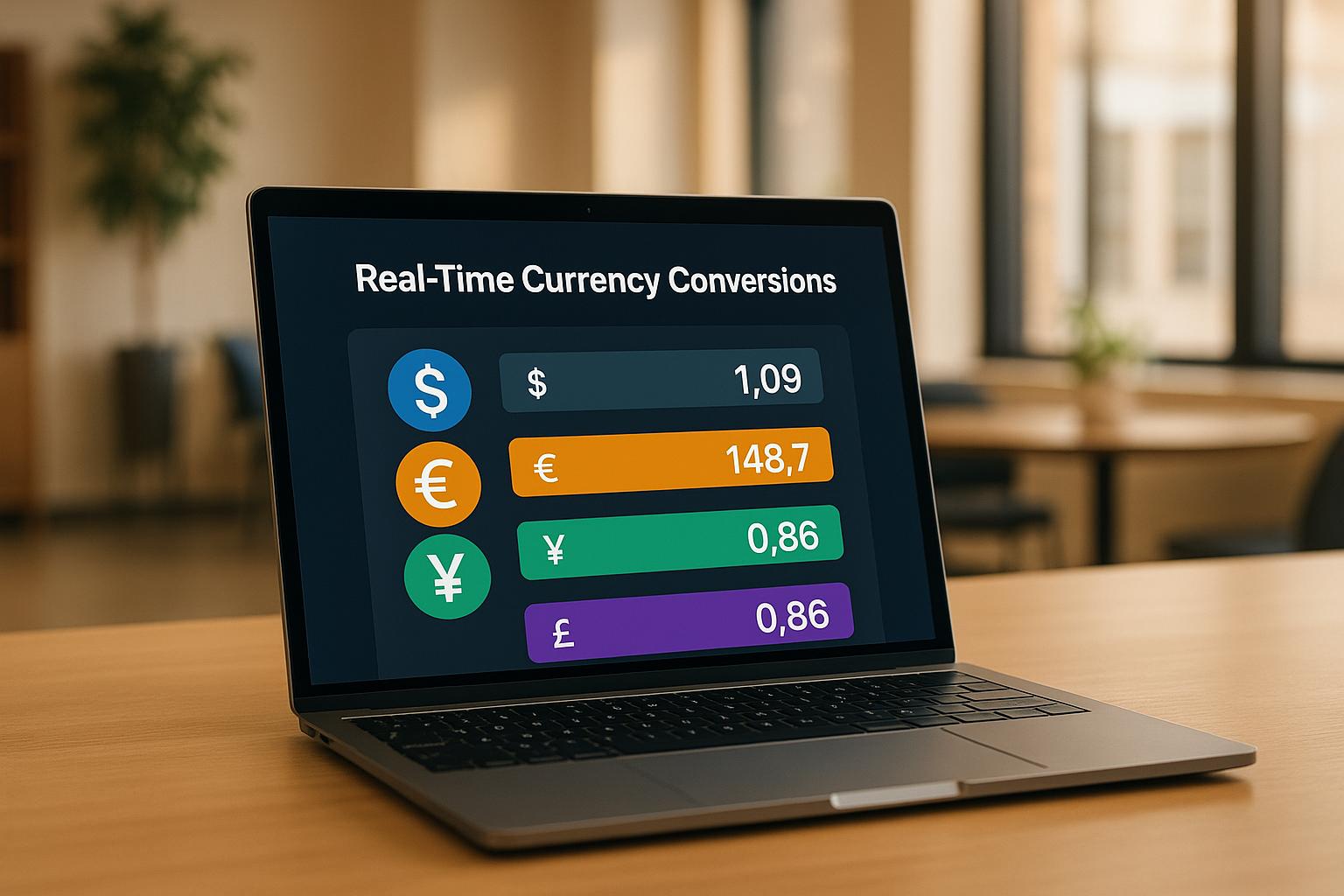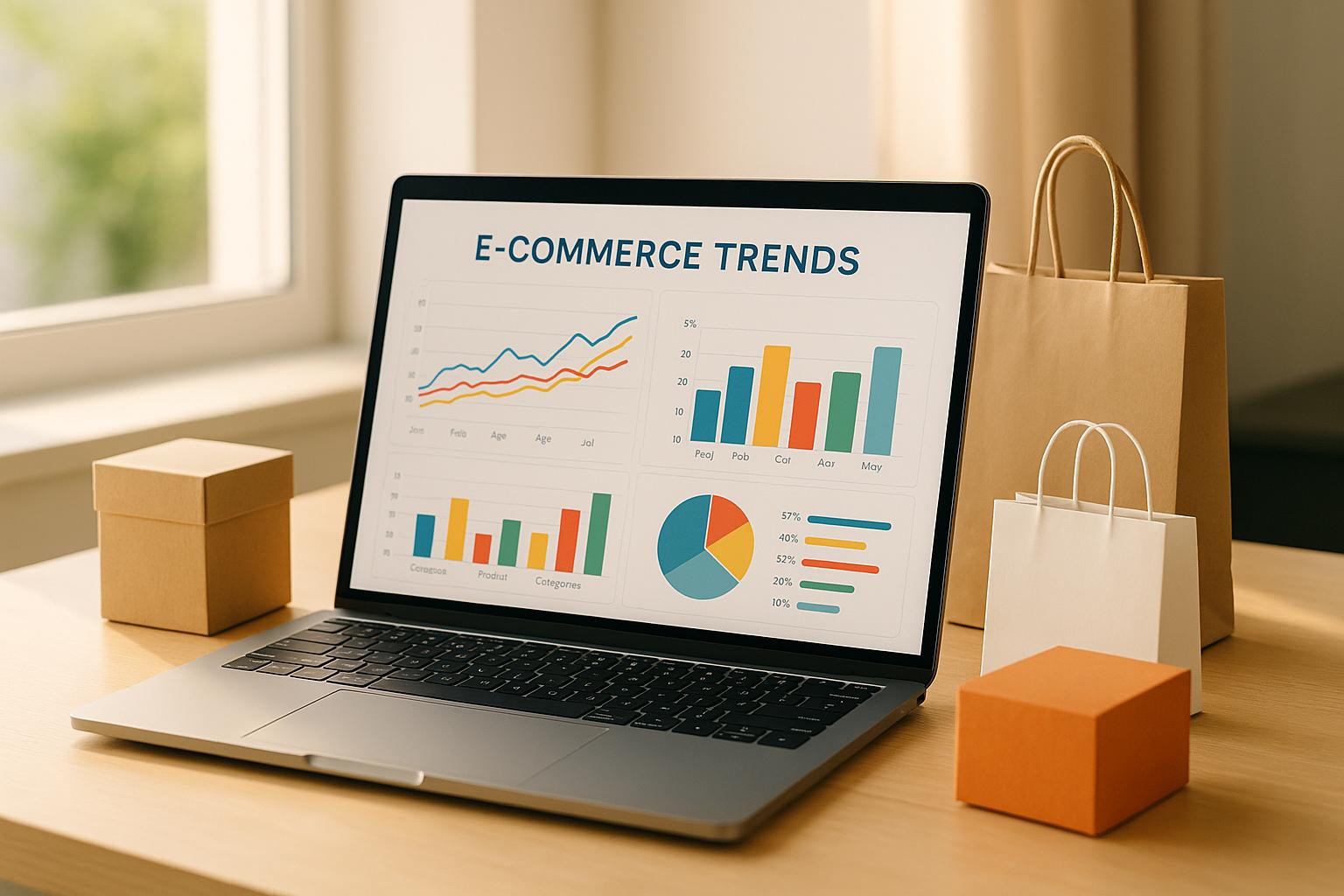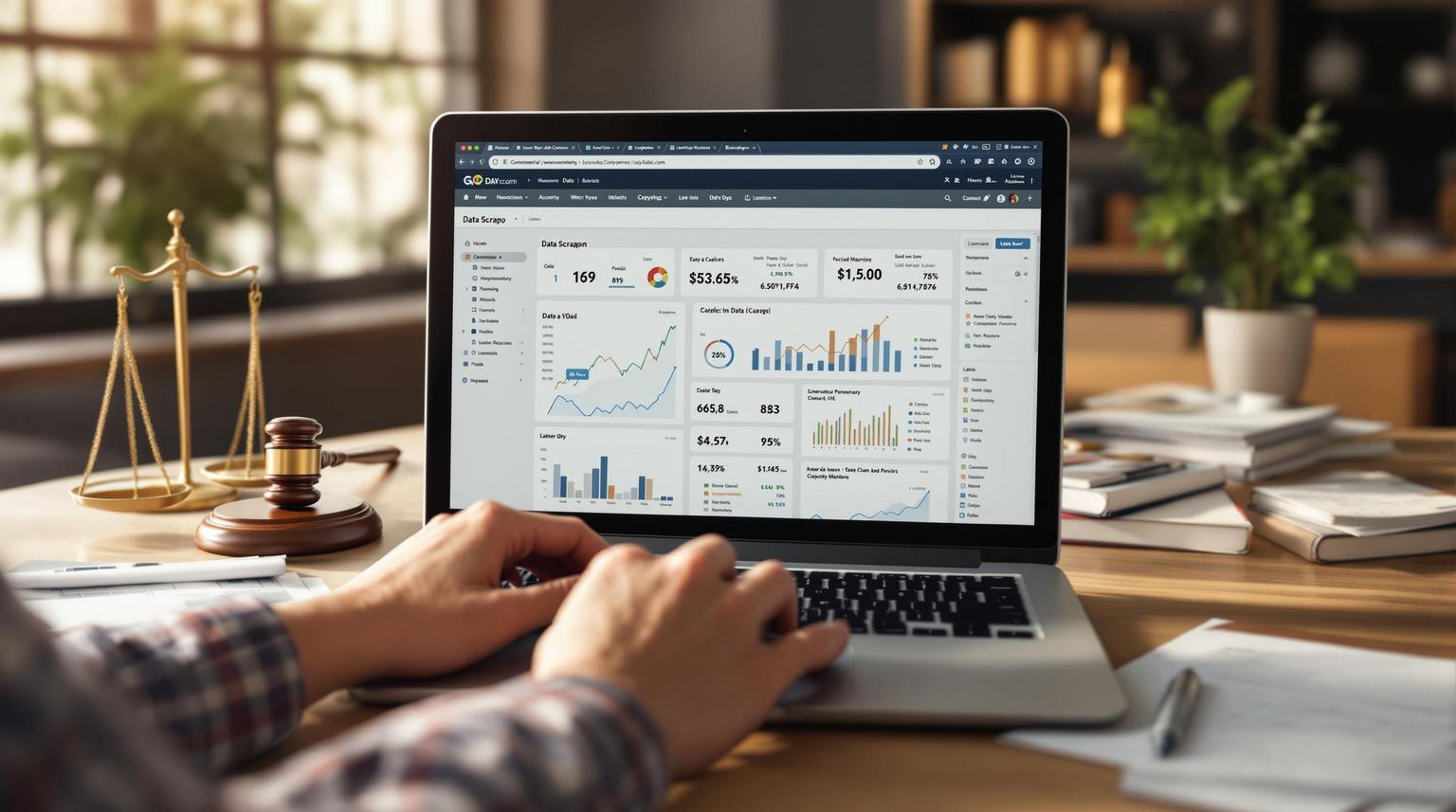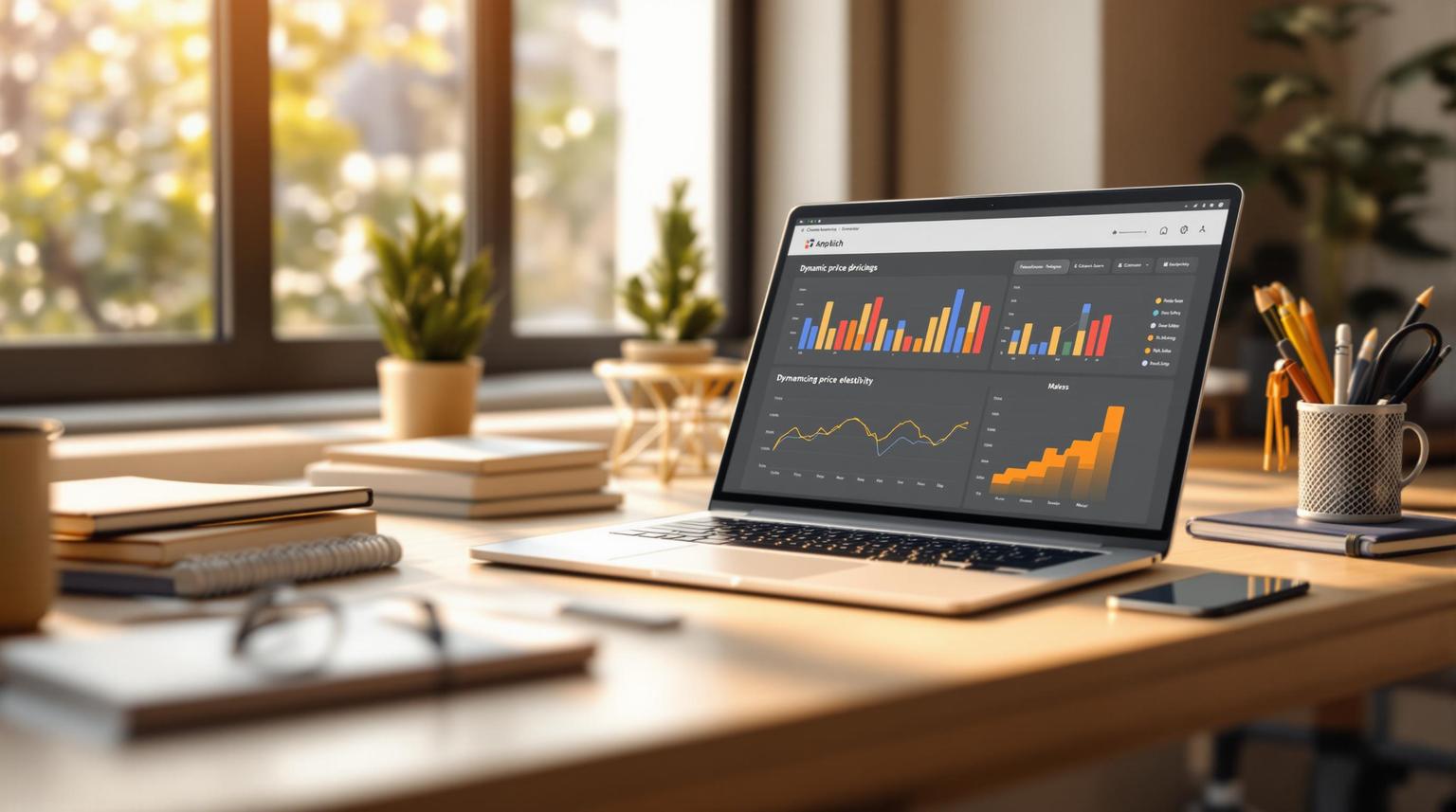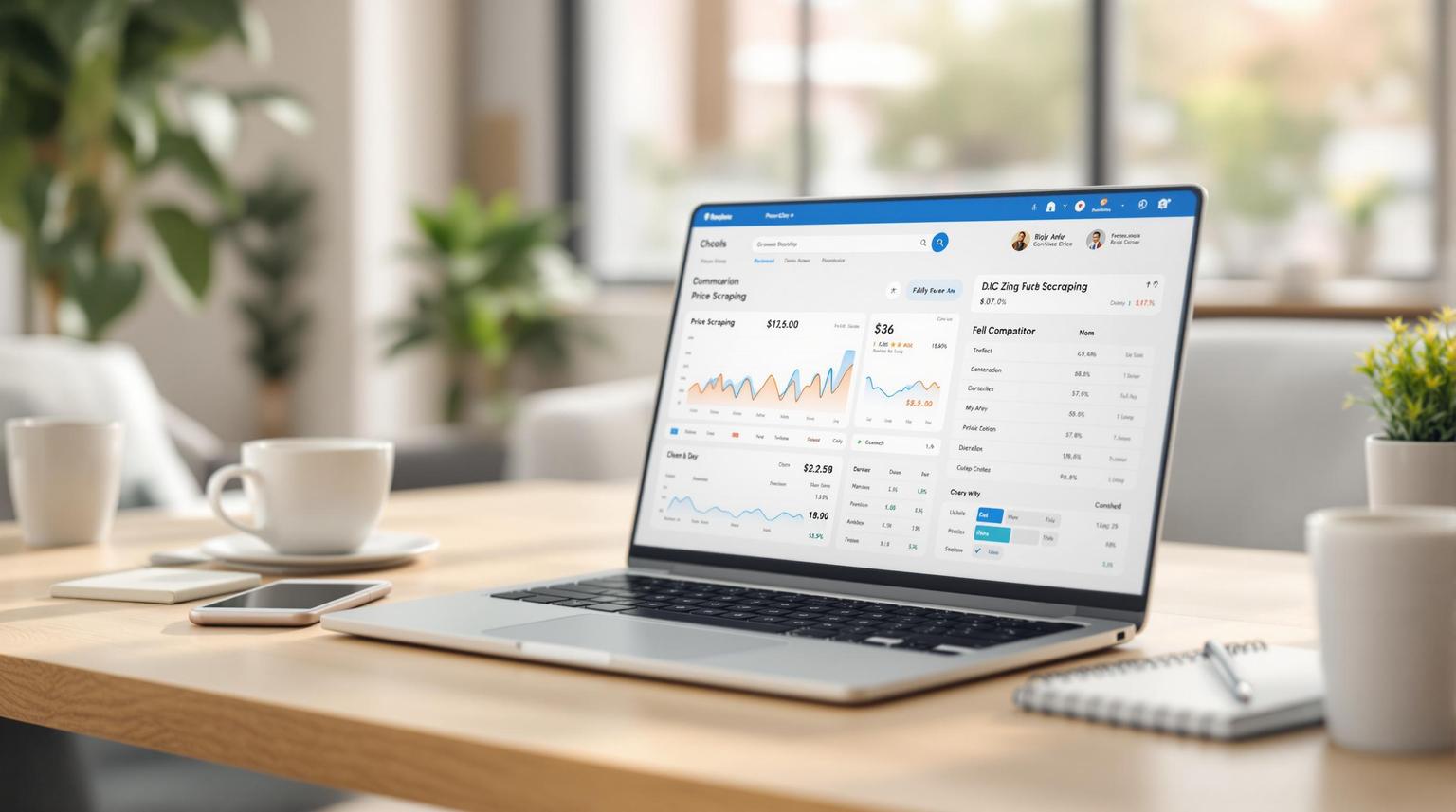Future trends in eCommerce pricing

February 6, 2025
eCommerce pricing is evolving rapidly. Businesses are moving away from static pricing to smarter, data-driven strategies powered by AI, machine learning, and automation. Here's what you need to know:
- AI & Machine Learning: Enables real-time price adjustments and personalized pricing to boost revenue and customer satisfaction.
- Data Scraping Tools: Automates competitor price tracking and market research for better pricing decisions.
- Blockchain: Improves price transparency and builds customer trust.
- IoT Integration: Optimizes supply chain pricing and adjusts prices based on inventory and logistics data.
- AR (Augmented Reality): Enhances customer engagement, justifying premium pricing.
These technologies are reshaping how businesses set prices, helping them stay competitive and meet customer expectations. Dive deeper to learn how companies like Amazon, Walmart, and Airbnb are leveraging these tools to lead the market.
AI in Price Management
AI systems analyze large volumes of data to fine-tune pricing strategies, helping businesses boost profits and stay competitive. By relying on data-driven decisions, companies can gain an edge over their rivals.
Live Price Updates
AI-powered tools allow businesses to adjust prices instantly based on real-time market changes. These systems continuously monitor and update prices automatically, ensuring businesses remain responsive to market dynamics.
| Key Factors | AI Analysis | Business Impact |
|---|---|---|
| Market Demand, Competitor Pricing, Inventory Levels | Combines demand trends, competitor pricing, and stock levels into actionable insights | Improves revenue, market share, and inventory management |
For example, Prisync, a pricing tool powered by AI, offers real-time competitor monitoring and bulk price updates starting at $99 per month. This technology enables retailers to protect profit margins without constant manual intervention.
AI doesn’t just stop at market-level adjustments - it also supports highly personalized pricing for individual customers.
Customer-Specific Pricing
AI goes beyond traditional customer segmentation by analyzing factors like:
- Customer behavior patterns
- Sensitivity to pricing
- Lifetime value of the customer
This level of detailed analysis allows businesses to offer tailored pricing strategies, creating a more personalized shopping experience.
Sales Forecasting with AI
AI-powered forecasting helps retailers stay ahead by providing insights to:
- Manage inventory more effectively
- Develop proactive pricing strategies
Take Walmart, for instance. The company uses AI to analyze its massive product catalog, predicting demand and adjusting prices dynamically based on specific data points.
While AI offers powerful tools for predictive pricing, its success hinges on the quality of data and seamless integration with existing systems. Retailers investing in robust datasets and aligning AI tools with their operations often see higher revenue and a stronger competitive stance.
Data Scraping Tools
Modern data scraping tools have changed how businesses gather and analyze market pricing data. When paired with AI, these tools allow companies to make smarter pricing decisions by automatically collecting competitor prices, product details, and market trends.
Automated Market Research
Tools like Oxylabs and ScrapingBee simplify competitor analysis by automating the process. They enable businesses to track thousands of products across marketplaces in real time.
| Feature | Impact on Pricing Strategy | Business Benefit |
|---|---|---|
| Real-time Monitoring | Quick price adjustments to market shifts | Keeps pricing competitive |
| Proxy Management | Reliable data from multiple sources | Offers a full view of the market |
| JavaScript Rendering | Access to dynamic pricing information | Ensures complete data collection |
For example, a retail company using Dynamic Pricing AI's scraping tools experienced a 15% boost in sales and a 10% rise in profit margins by automating competitor price tracking and making real-time adjustments.
ShoppingScraper: Market Data Tools
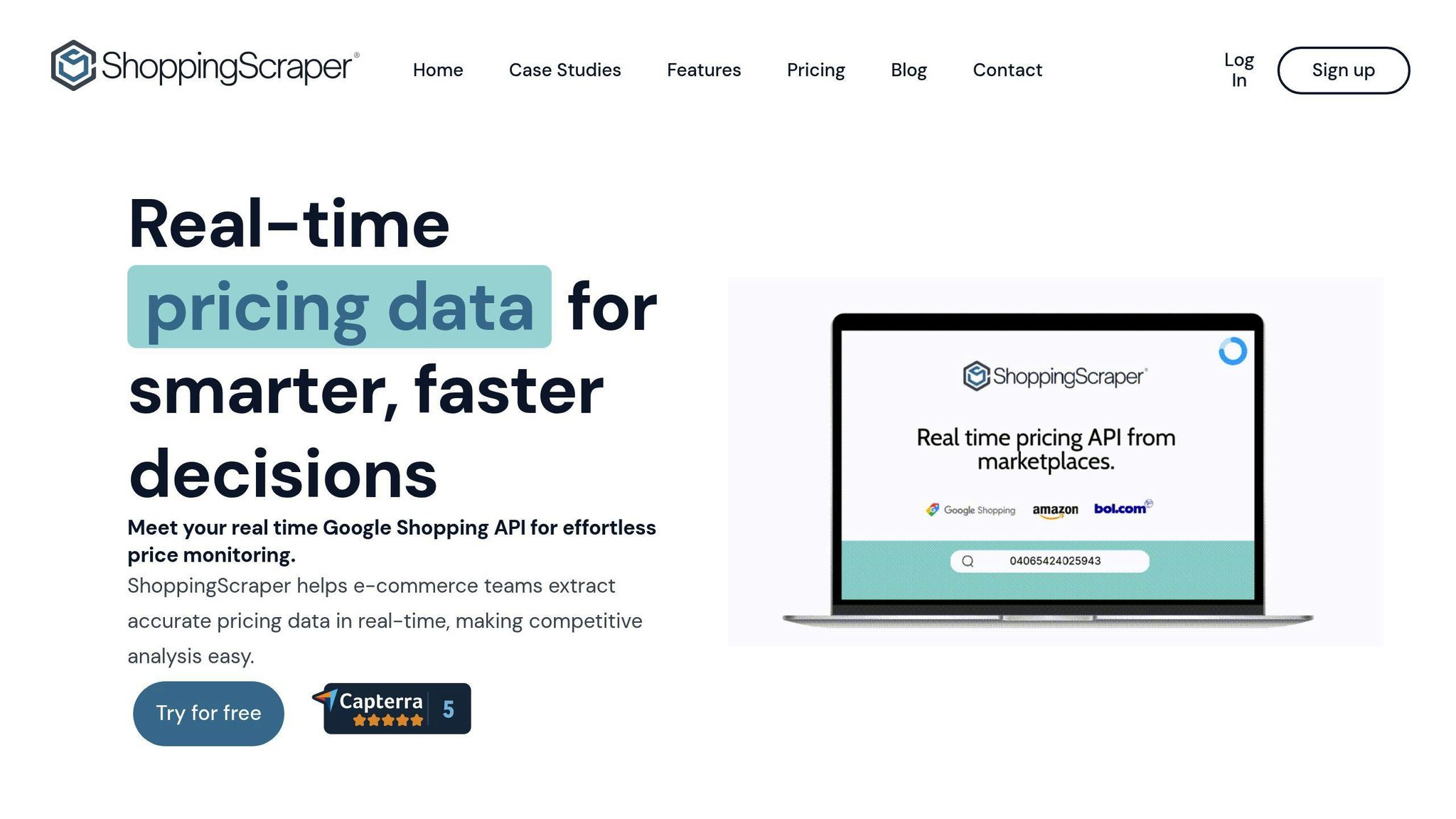
ShoppingScraper is another option for businesses looking to track product prices. It offers features like real-time data extraction, API integration, automated scheduling, and export options (JSON/CSV). Its Advanced plan (€399/month) supports tracking up to 150,000 product prices across various marketplaces.
Legal Rules for Data Collection
Using scraping tools comes with legal responsibilities. Businesses must follow regulations like GDPR, CCPA, and respect website terms and IP rights. Tools such as ScraperAPI help ensure compliance by offering features like CAPTCHA solving and IP rotation, allowing ethical and lawful data collection.
These tools have grown beyond simple data gathering. When combined with machine learning, they help businesses fine-tune pricing strategies with advanced analytics and predictive insights.
Machine Learning for Pricing
Machine learning helps eCommerce businesses identify hidden pricing trends and automate complex pricing decisions. This approach allows companies to stay competitive while balancing profitability. By using these tools, businesses can respond to market changes quickly and with greater precision.
Customer Behavior and Pricing Optimization
Machine learning examines past trends, customer actions, and market shifts to determine the best price points for boosting sales and revenue. It also enables personalized pricing strategies by grouping customers based on their buying habits and sensitivity to price changes.
With this automated analysis, businesses can:
- Predict the best price points for various market scenarios
- Group customers for tailored pricing strategies
- Adjust prices dynamically based on demand
- Boost revenue while staying competitive in the market
Finding Price Errors
Machine learning tools continuously track pricing across platforms to spot inconsistencies, keeping prices accurate and margins protected. These systems flag pricing errors, platform mismatches, and prices that fall below cost, helping businesses avoid costly mistakes.
The predictive analytics software market, which includes machine learning pricing tools, is projected to hit $27.21 billion by 2030. This growth highlights the growing reliance on automated pricing in eCommerce.
For successful implementation, businesses need high-quality data and frequent model updates to ensure accurate results. Balancing automated pricing with human oversight is crucial to keeping strategies aligned with business goals and market conditions.
As machine learning evolves, new tools and technologies are reshaping how businesses manage pricing strategies.
sbb-itb-65e392b
New Tools for Price Setting
The world of eCommerce pricing is evolving thanks to new technologies that bring fresh ways to analyze markets and set prices. These advancements are changing how online retailers strategize and connect with their customers.
Blockchain Price Tracking
Blockchain is making pricing more transparent by recording price changes in a way that’s easy to verify. This not only builds trust with customers but also helps retailers keep prices consistent across different platforms.
"Walmart's implementation of blockchain reduced their product origin tracking time from 7 days to just 2.2 seconds, highlighting its potential for pricing and supply chain efficiency", notes IBM's blockchain division report.
Some key advantages of blockchain include a clear pricing history, protection against tampering, and improved customer confidence.
While blockchain focuses on transparency, technologies like IoT are changing how businesses manage supply chains and adjust prices.
IoT Supply Chain Pricing
Internet of Things (IoT) devices are reshaping how retailers handle inventory and make pricing decisions in real-time. The IoT market is expected to hit $1.4 trillion by 2027.
| IoT Application | Pricing Impact | Business Benefit |
|---|---|---|
| Smart Shelves & Sensors | Monitor inventory and costs instantly | Automates price changes based on stock levels |
| Supply Chain Sensors | Track live logistics costs | Enables more accurate pricing |
| Connected Warehouses | Predict stock needs automatically | Adjusts prices dynamically based on forecasts |
On top of supply chain innovations, tools like AR are changing how customers perceive and interact with pricing.
AR Effects on Pricing
Augmented Reality (AR) isn’t just for marketing - it’s also influencing how customers view value and pricing. By using AR, retailers can justify higher price points through better engagement.
IKEA’s AR app is a great example. It lets customers visualize products in their own space, boosting confidence in purchases and supporting premium pricing.
Retailers can leverage AR to create engaging experiences, showcase premium features, and align these efforts with dynamic pricing strategies.
Adopting these technologies requires balancing technical know-how with customer expectations. As these tools develop, retailers must focus on practical implementation to stay competitive while delivering great customer experiences.
Conclusion
With tools like blockchain and IoT reshaping how pricing strategies work, businesses need to think ahead to stay competitive. Advanced technologies and data-driven methods are revolutionizing eCommerce pricing, with AI-powered dynamic pricing systems leading the charge. These systems allow retailers to adjust prices in real time, keeping pace with market changes and boosting their pricing strategies.
The results speak for themselves. Businesses using AI-driven pricing tools have shown clear improvements in how they optimize prices and respond to market shifts.
To make the most of these technologies, companies should prioritize three key areas:
| Focus Area | How to Implement | Outcome |
|---|---|---|
| Data Quality | Use reliable data tools and maintain accurate market insights | Better pricing decisions and stronger market positioning |
| AI Integration | Apply machine learning for price sensitivity and customer segmentation | Pricing that adapts to market shifts effectively |
| Technology Stack | Combine tools like blockchain, IoT, and AR with existing systems | Greater transparency and an improved customer experience |
These technologies - AI, blockchain, IoT, and AR - are shaping the future of pricing strategies. Value-based pricing, while requiring more research, often leads to higher profits.
To stay ahead, businesses should aim to create a pricing system that blends AI with customer trust. This means using real-time price updates, personalized pricing models, and advanced analytics to predict sales trends.
Success in future pricing will come from balancing cutting-edge tools with customer needs - ensuring profits go up while customers see clear value. By adopting these approaches, businesses can secure their place in the ever-evolving eCommerce world.
FAQs
What is dynamic pricing in e-commerce?
Dynamic pricing is a flexible pricing method where eCommerce businesses adjust product prices in real-time based on factors like market trends, demand, and competitor pricing. Unlike fixed pricing, this approach uses AI to make quick adjustments, helping businesses stay competitive and boost revenue.
Major players like Airbnb and Uber have successfully adopted dynamic pricing. For example, Airbnb uses "smart pricing" to adjust rates based on events and seasons, improving both occupancy and earnings. Similarly, Uber's surge pricing matches higher demand during peak times with available supply.
| Company | Approach | Outcome |
|---|---|---|
| Airbnb | Adjusts prices based on seasons and events | Increases occupancy and revenue |
| Uber | Uses surge pricing for high-demand periods | Balances demand with driver availability |
Interestingly, only 20% of companies in the US and Europe currently use dynamic pricing, showing room for wider adoption. To implement it effectively, businesses need to prioritize transparency, follow regulations, use reliable data, and maintain customer trust.
Dynamic pricing is a prime example of how AI and machine learning are transforming eCommerce strategies, offering smarter ways to meet market demands.
Related posts












